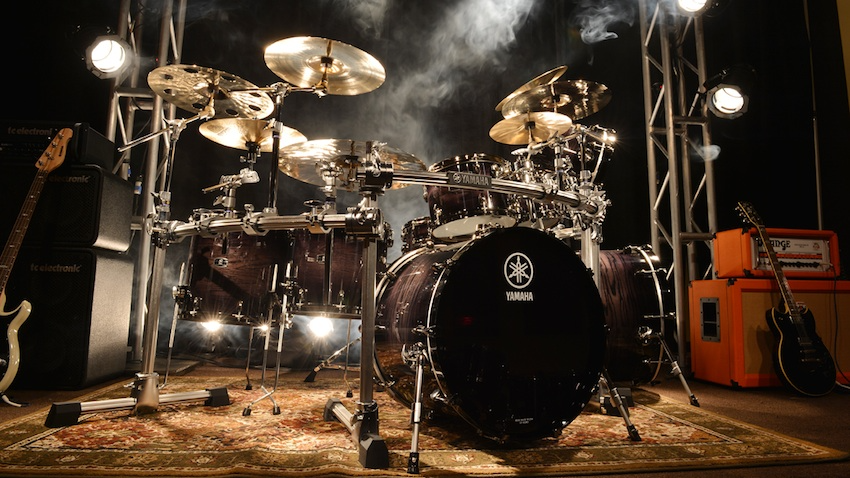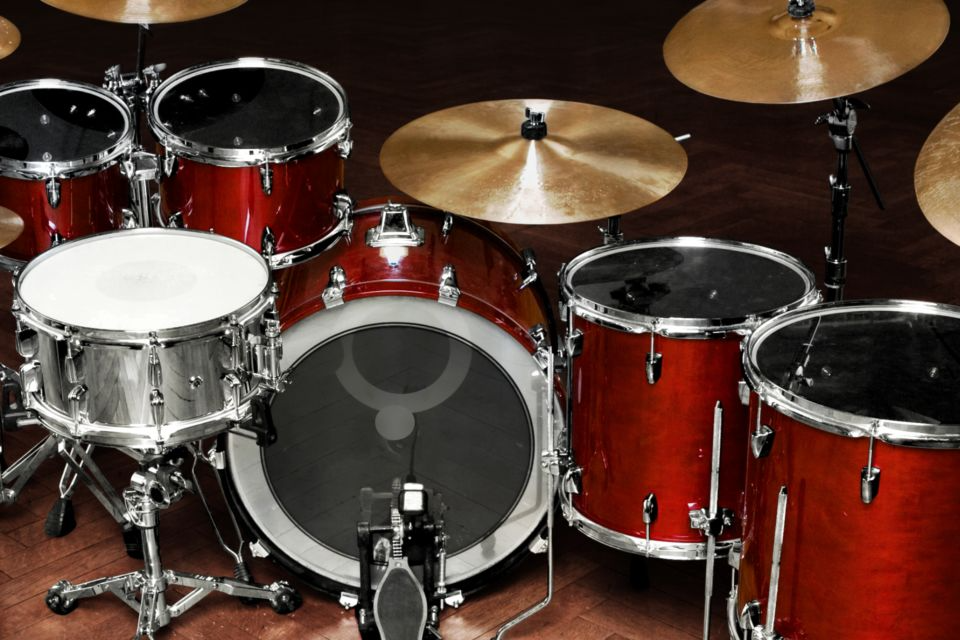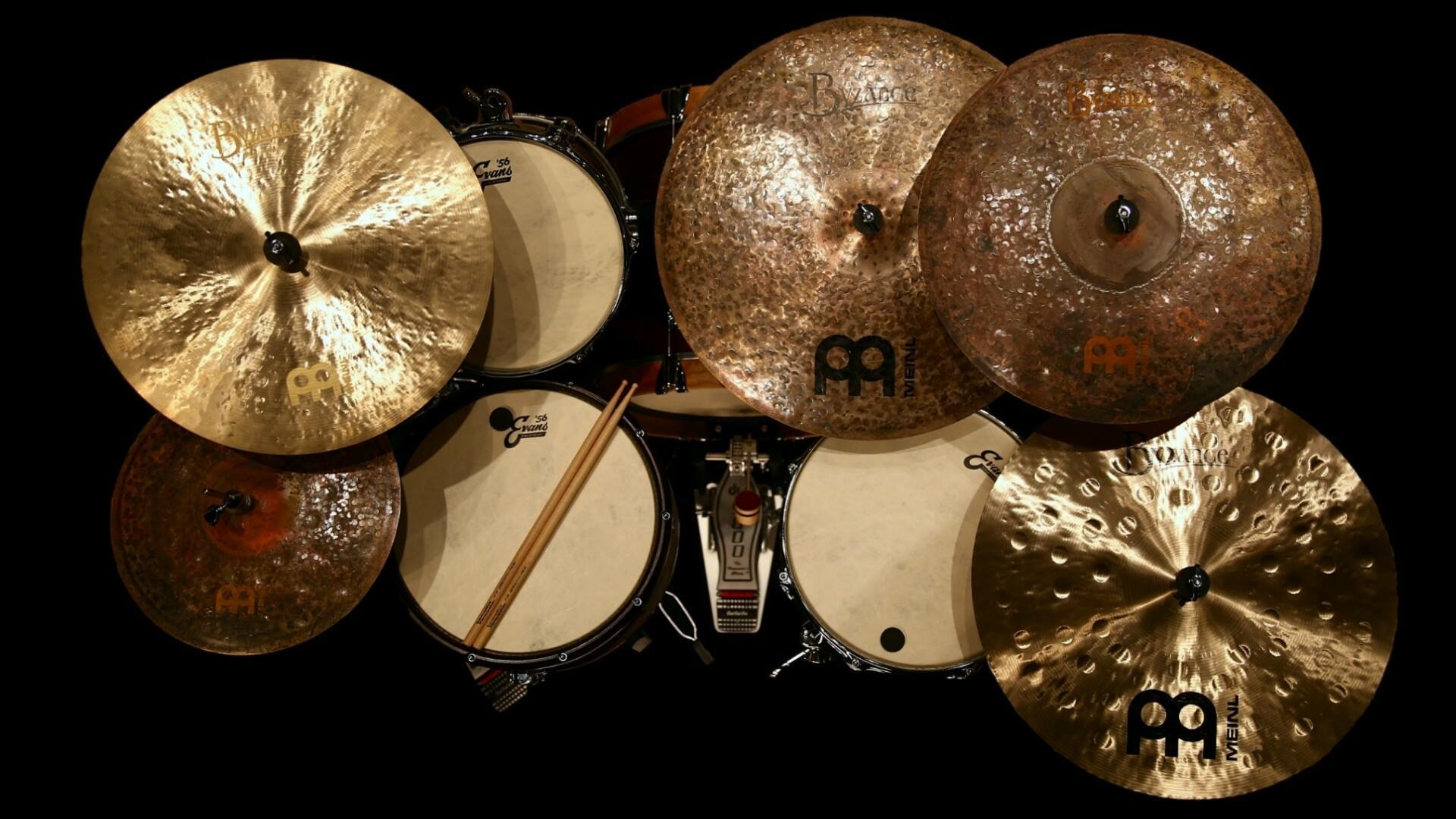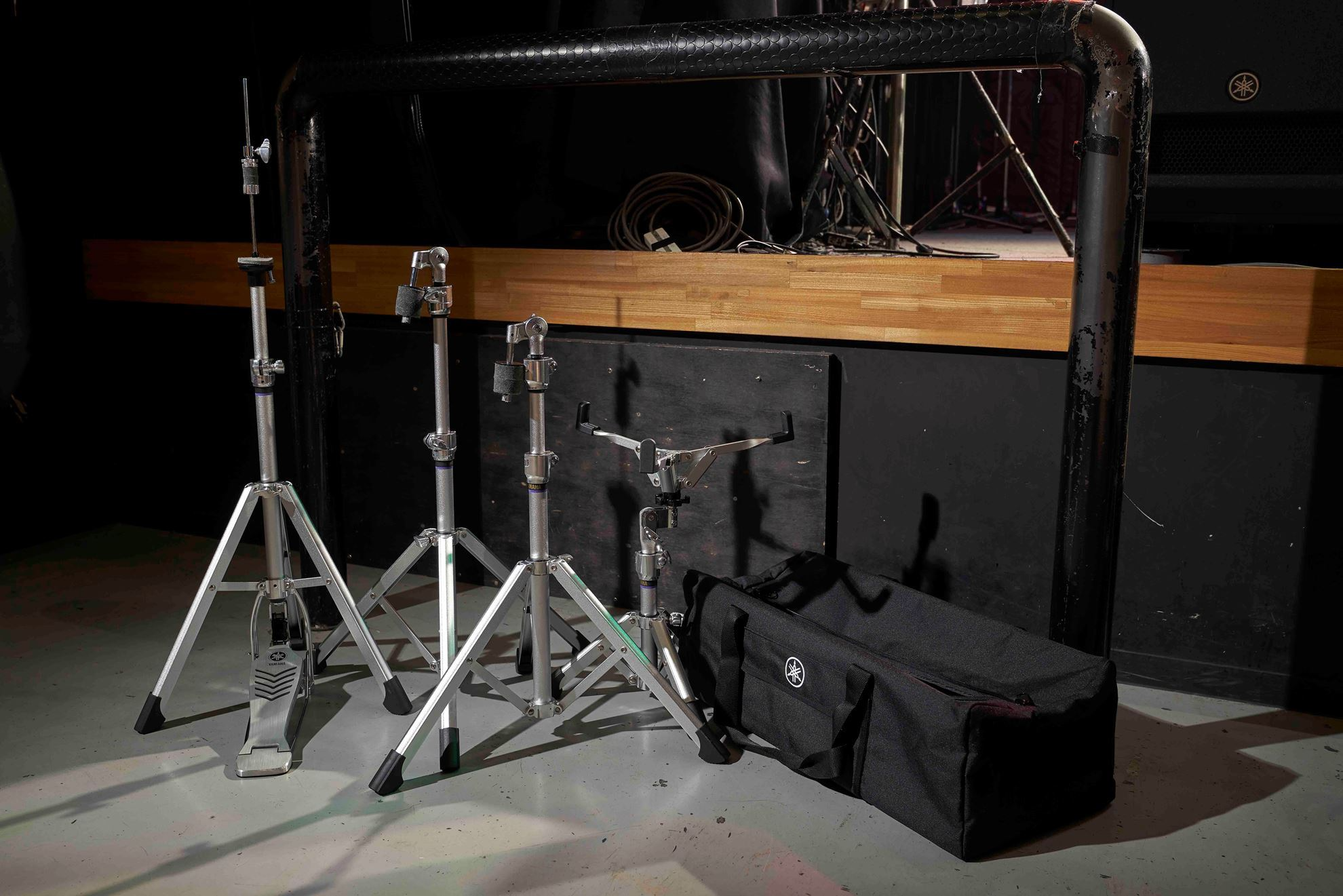{{item.name}}
{{item.attribute}}: {{item.attribute1}}
{{item.attribute2}}: {{item.attribute3}}
NRs {{item.price}} NRs {{Number(item.price) - ((Number(item.discount)/100 * Number(item.price)))}} NRs {{item.price}}
This item is not available now.

A drum set (sometimes called a drum “kit”) is simply a collection of drums, cymbals and mounting hardware, similar to those you’ve seen played onstage by your favorite band. There are two kinds of drum sets: acoustic and electronic.
An acoustic drum set is made up of the following five basic components:

There are typically at least four or five drums in a set. Each consists of a shell (typically made of wood, but also sometimes metal), across which is stretched a drum skin or “head” (usually made of clear plastic Mylar® or calfskin) — the surface you hit with a stick. The drums that are used most of the time are the bass (“kick”) drum and snare drum, though most drum sets also include one or more tom-toms.

Circular plates made of metal, used for a crashing sound. The most important of these are a hi-hat (two small cymbals mounted vertically, one inverted, that come in contact with one another when a pedal is pressed) and a “ride” cymbal. A starter drum set may also include one or more “crash” cymbals.

Metal stands to hold the cymbals and drums, plus a throne (seat), a foot pedal (for the bass drum) and a hi-hat stand that includes a pedal for crashing the two cymbals together.

Long wooden dowels used to strike the drums and cymbals

A small metal device used to tune the drums by stretching their skins.
Electronic drum kits (sometimes called “E-drums”) contain only the first four components, although the “drum” and “cymbal” sounds are produced via electronic, not acoustic means.It is essentially a collection of sample pads set up in the same way as an acoustic drum kit. The pads themselves are designed to produce little acoustic sound, other than the dead sound of the wooden drum sticks hitting rubber. The drum kit has to be plugged into an amplifier, speaker, or pair of headphones to be heard, which makes them ideal for practice when volume has to be kept to a minimum.

When deciding which kind of drums to buy here’s what you need to first decide or look out for-
Establish a budget. If money is tight, then remember that most manufacturers offer several different grades of drums, at different price points. The value-priced kits are still excellent-quality instruments; they often incorporate many of the features of the more expensive kits.
Define your acoustic space. Where will the drums be played? If they’re likely to stay in one location, then you can choose sizes and shell material that “fit” the space. If the drums are likely to travel a lot, then choose a kit that’s easy to transport, perhaps one with maple shells — the most versatile wood.
Choose a musically appropriate combination. Here’s where you decide how many toms and cymbals are necessary to realize your musical goals.
One of the most important factors is the space required. In addition, you will want to consider the time of day you or your child will be practicing — will this disrupt your other family members or the neighbors?

Great for most acoustic styles of music; rock, pop, jazz, blues, funk etc.
Perfect for high volume/high energy playing.
Requires more skill to get a nice sound early on.
Responsive to your touch and feel.
Knowledge of how to maintain an acoustic kit is very valuable. If you’re playing on someone else’s drum kit the chances are it will be acoustic.
Practice can be more difficult if you have neighbours nearby or can only practice at night due to the loud natural response of acoustic drums. (this volume can be reduced with silencing pads)
Often takes up more space.
Requires tuning, something which takes years of practice to be able to do well.
To get a decent sounding acoustic kit (especially cymbals) costs quite a lot of money

Great for low/zero volume practice.
Pads are often smaller than acoustic drums so if space is a problem, electric kits can be a solution.
Perfect if you’re playing electronic music that requires MIDI samples. You don’t need to buy a separate sample pad as with intermediate/advanced electronic drum kits you can programme specific samples to each pad.
Most electric kits come with a built in metronome. (although nowadays this is less of an issue as you can simply download a metronome app on your smartphone).
Doesn’t require any tuning.
Doesn’t require knowledge of drum maintenance.
The drum and cymbal samples have already been EQ’d meaning that the sound you hear is similar to the sound of drums in recordings.
Beginner electric drum kits have limited features. You are often stuck with a handful of presets and have no control over individual drum samples or overall EQ.
As digital technology is advancing so quickly you could buy a good quality electric drum kit and find that in 10 years it will have devalued significantly.
Many drummers who have only ever played electric drum kits end up with a lot of bad habits due to the fact that a sample pad reacts differently to being played than an acoustic drum or cymbal does. Some examples are;
Not allowing the drum stick/bass drum beater to rebound. When playing an acoustic kit not allowing the stick to rebound will produce a choked sound, whereas this isn’t the case on an electric kit.
Playing with poor dynamic balance between different parts of the kit. On an electric kit it’s easy just to turn the hi hat volume down if you think it’s too loud, rather than hitting the hi hat lighter. Many drummers who have played electric drums their whole lives play with an awkward, forced feel when playing acoustic drum kits.
Playing too loud. The volume on an electric kit can simply be turned down. On an acoustic kit if you want to play quietly you need to develop the technique to allow you to do this, something that as a professional drummer is incredibly important.
If you want to make a career out of just drumming an acoustic kit might be better, but if you are looking to learn the drums casually, want to learn how to play an amazing instrument without having to worry about bothering people around you or doing it as a hobby, an electronic kit is a better choice.